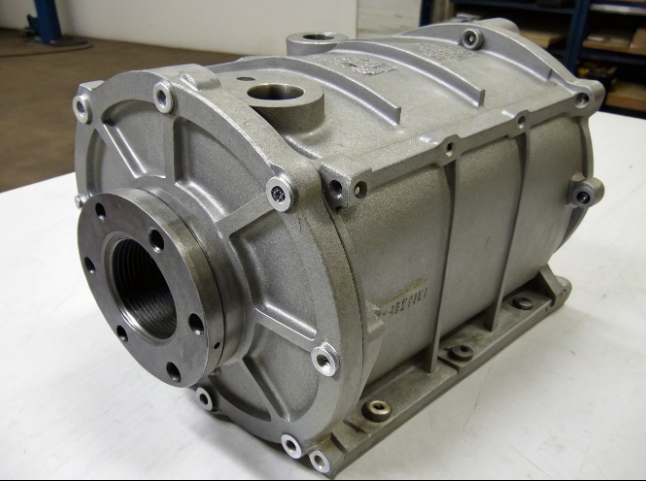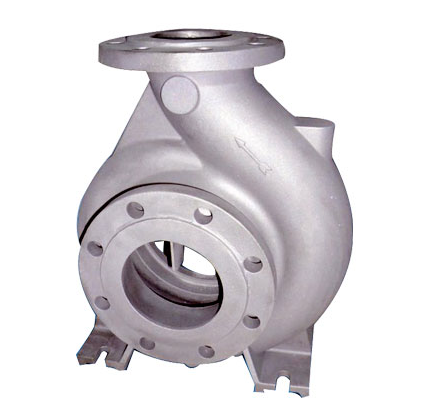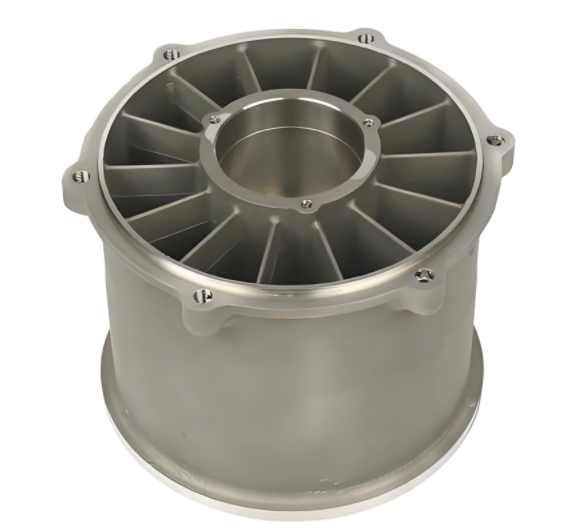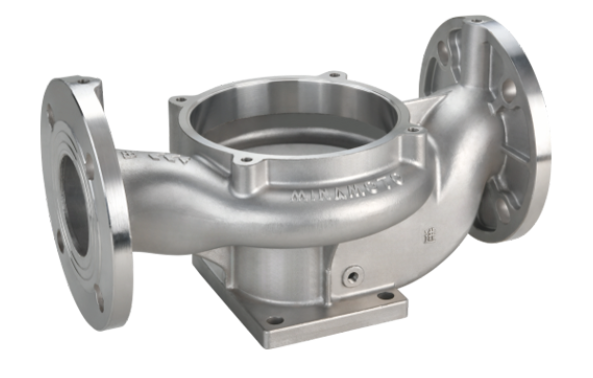The pump body, also known as the pump casing or housing, is a critical component of a pump system that encases the internal mechanisms responsible for fluid movement. It provides structural integrity, directs fluid flow, and withstands operational pressures. Pumps are mechanical devices that transfer fluids (liquids, gases, or slurries) by converting mechanical energy into hydraulic or pneumatic energy. This article explores the definition of pump bodies, their classification into various types, and their applications across industries, supported by technical parameters and structured data for clarity.
What Is a Pump Body
The pump body is the outer shell of a pump, designed to contain and protect the impeller, seals, and other internal components. It ensures proper alignment of moving parts, manages fluid flow paths, and resists corrosion, pressure, and wear. Materials commonly used for pump bodies include cast iron, stainless steel, bronze, and engineered plastics, selected based on fluid type, temperature, and pressure requirements. The pump body’s design directly impacts efficiency, durability, and maintenance needs.

Types of Pump Bodies
Pump bodies are classified based on the pump’s operational mechanism, primarily into dynamic pumps and positive displacement pumps. Each type has unique designs, performance characteristics, and suitability for specific applications. The table below summarizes the main types and their key parameters.
| Pump Type | Mechanism | Key Parameters | Allgemeine Materialien |
|---|---|---|---|
| Centrifugal (Dynamic) | Rotating impeller accelerates fluid | Flow: 10–5000 gpm (0.038–18.93 m³/min) Head: Up to 700 ft (213 m) Efficiency: 50–85% | Cast iron, stainless steel, bronze |
| Axial Flow (Dynamic) | Propeller moves fluid along axis | Flow: Up to 200,000 gpm (757 m³/min) Head: Up to 50 ft (15 m) | Stainless steel, aluminum |
| Reciprocating (Positive Displacement) | Piston or plunger displaces fluid | Flow: 0.1–1000 gpm (0.00038–3.78 m³/min) Pressure: Up to 5000 psi (345 bar) | Stainless steel, cast iron |
| Rotary (Positive Displacement) | Rotating elements trap and move fluid | Flow: 1–5000 gpm (0.0038–18.93 m³/min) Pressure: Up to 1500 psi (103 bar) | Cast iron, stainless steel, PTFE |
Dynamic Pump Bodies
Dynamic pump bodies house mechanisms that impart continuous energy to increase fluid velocity, which is later converted into pressure. They are suited for high-flow, low-pressure applications.
- Centrifugal Pumps: The pump body contains a rotating impeller that accelerates fluid outward. The casing, often a volute or diffuser type, converts kinetic energy into pressure. These pumps handle clean liquids, slurries, or water in applications like municipal water supply, wastewater treatment, and HVAC systems. Parameters include flow rates of 10–5000 gpm, heads up to 700 feet, and efficiencies of 50–85%. The volute casing is typically made of cast iron for durability, while stainless steel is used for corrosive fluids.
- Axial Flow Pumps: These pump bodies encase a propeller-like impeller that moves fluid parallel to the pump shaft. They are ideal for high-flow, low-head scenarios, such as irrigation or flood control, with flow rates reaching 200,000 gpm and heads up to 50 feet. Materials like aluminum reduce weight for large-scale installations.
- Mixed Flow Pumps: Combining centrifugal and axial characteristics, these pump bodies support moderate flow and head. They are used in applications like cooling water systems, with flow rates up to 20,000 gpm and heads up to 100 feet.
Positive Displacement Pump Bodies
Positive displacement pump bodies trap a fixed volume of fluid and displace it mechanically, making them suitable for high-pressure, low-flow applications. They are used with viscous fluids or precise metering needs.
- Reciprocating Pumps: The pump body houses a piston or diaphragm that moves fluid in a cyclic motion. They deliver high pressures (up to 5000 psi) and are used in oil and gas, chemical dosing, and high-pressure cleaning. The casing is typically stainless steel to withstand high pressures and corrosive fluids.
- Rotary Pumps: These pump bodies contain rotating elements like gears, vanes, or screws to move fluid. They are used in hydraulic systems, food processing, and fuel transfer, with flow rates up to 5000 gpm and pressures up to 1500 psi. Materials like PTFE ensure compatibility with food-grade or chemical fluids.

Applications of Pump Bodies
Pump bodies are integral to diverse industries, with their design and material tailored to specific operational demands. The table below highlights key applications and the pump types commonly used.
| Industrie | Pump Type | Anwendungen |
|---|---|---|
| Water Management | Centrifugal, Axial Flow | Municipal water supply, wastewater treatment, irrigation, flood control |
| Öl und Gas | Reciprocating, Rotary | Crude oil transfer, chemical injection, pipeline boosting |
| Chemical Processing | Centrifugal, Rotary | Corrosive fluid handling, chemical dosing, process fluid transfer |
| Food and Beverage | Rotary | Food-grade fluid transfer, viscous liquid handling, hygienic processing |
| HVAC and Power | Centrifugal, Mixed Flow | Cooling water circulation, boiler feed, condensate return |
Water Management
In water management, centrifugal and axial flow pump bodies are prevalent due to their ability to handle large volumes of water. Centrifugal pumps are used in municipal water supply systems, with casings designed to minimize turbulence and maximize efficiency. Axial flow pumps, with robust stainless steel or aluminum bodies, are employed in flood control and irrigation, handling flows up to 200,000 gpm.
Öl und Gas
Reciprocating and rotary pump bodies are critical in oil and gas, where high-pressure and viscous fluid handling is required. Reciprocating pump bodies, often made of stainless steel, support chemical injection and pipeline boosting, operating at pressures up to 5000 psi. Rotary pump bodies handle crude oil transfer with minimal shear, using materials resistant to abrasive wear.
Chemical Processing
Chemical processing demands pump bodies that resist corrosion and chemical degradation. Centrifugal pumps with stainless steel or plastic-lined casings handle corrosive fluids, while rotary pumps ensure precise chemical dosing. Flow rates typically range from 1–1000 gpm, with pressures up to 1500 psi.
Food and Beverage
Rotary pump bodies, often made of stainless steel or PTFE, are used in food and beverage applications for hygienic fluid transfer. They handle viscous liquids like syrups or oils, with flow rates up to 5000 gpm and designs compliant with FDA standards.
HVAC and Power
Centrifugal and mixed flow pump bodies are used in HVAC systems for cooling water circulation and in power plants for boiler feed applications. These pumps operate at moderate heads (up to 700 feet) and are designed for continuous operation, with cast iron or stainless steel casings for durability.

Selection Considerations for Pump Bodies
Choosing the right pump body involves evaluating fluid type, flow rate, pressure, and environmental conditions. Key considerations include:
- Kompatibilität der Materialien: Ensure the pump body material resists corrosion or wear from the fluid (e.g., stainless steel for corrosive chemicals, bronze for seawater).
- Operating Conditions: Match the pump body to the required flow rate and pressure (e.g., centrifugal for high flow, reciprocating for high pressure).
- Efficiency and Maintenance: Select designs that optimize energy use and simplify maintenance, such as split-case centrifugal pumps for easy access.
- Umweltfaktoren: Consider temperature, humidity, and exposure to ensure the pump body withstands operational conditions.
Schlussfolgerung
Pump bodies are essential for the functionality and longevity of pumping systems, with designs tailored to dynamic or positive displacement mechanisms. Understanding their types—centrifugal, axial flow, reciprocating, and rotary—and their applications in industries like water management, oil and gas, chemical processing, food and beverage, and HVAC ensures informed selection. By considering technical parameters like flow rate, head, pressure, and material compatibility, engineers can optimize pump performance for specific operational needs.
